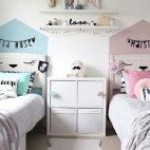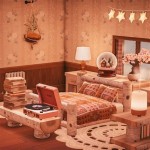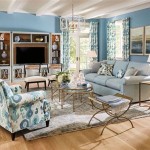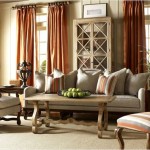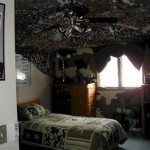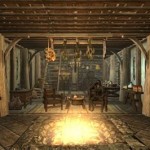```html
How To Decorate The Room Wall: A Comprehensive Guide
Decorating room walls offers a significant opportunity to personalize living spaces and reflect individual stylistic preferences. The walls constitute a considerable portion of a room’s visual landscape, and their treatment invariably impacts the overall ambiance and perceived dimensions of the space. A well-decorated wall can transform a mundane room into a captivating and inviting environment. This article outlines various strategies for effectively decorating room walls, focusing on key considerations and practical methods.
Selecting a Palette and Theme
The initial step in wall decoration involves selecting a color palette and an overarching theme. The chosen palette should complement existing furniture, flooring, and accessories within the room. Consider the intended mood; lighter colors generally create a more spacious and airy feel, while darker colors can impart warmth and intimacy. Neutrals provide a versatile backdrop that allows for flexibility with accent colors and decorative elements.
The theme, or style, should be cohesive with the overall design aesthetic of the home. Options range from minimalist and contemporary to traditional and bohemian. Incorporating personal interests and collections into the wall decor can further enhance the sense of individuality and create a unique visual narrative. Regardless of the chosen theme, maintaining consistency in color and style across the room is essential for achieving a harmonious and balanced look.
Consider the psychological impact of different colors. Blue, for example, is often associated with calmness and serenity, making it suitable for bedrooms or relaxation areas. Red, on the other hand, is associated with energy and excitement, and may be better suited for dining rooms or living rooms. Green evokes feelings of nature and tranquility, and can be a good choice for any room. Carefully consider the intended purpose of the room and how the colors will interact with the natural light and existing furnishings.
Exploring Painting Techniques and Wall Coverings
Painting is a fundamental method for altering the appearance of walls. Beyond simply applying a uniform coat of paint, consider exploring various painting techniques to add depth and texture. Faux finishing techniques, such as sponging, rag rolling, or color washing, can create unique and visually interesting effects. Stenciling allows for the application of intricate patterns and designs directly onto the wall surface.
Wallpaper presents another versatile option for wall decoration. Wallpaper comes in a wide array of patterns, textures, and colors, offering possibilities for adding visual interest and personality to a room. Consider the scale of the pattern in relation to the size of the room; larger patterns can overwhelm smaller spaces, while smaller patterns may get lost in larger rooms. Textured wallpaper can add depth and dimension to walls, while metallic wallpapers can introduce a touch of glamour and sophistication.
For those seeking a more temporary solution, consider using removable wallpaper or wall decals. These options allow for easy repositioning and removal, making them ideal for renters or those who like to change their decor frequently. Wall decals come in a variety of designs, from simple geometric shapes to intricate murals, and can be applied to any smooth surface. Removable wallpaper offers the same benefits as traditional wallpaper, without the commitment of permanent installation.
Integrating Art, Mirrors, and Shelving
Art plays a crucial role in wall decoration, serving as a focal point and reflecting personal artistic preferences. Select artwork that complements the chosen color palette and theme of the room. Consider the size and scale of the artwork in relation to the wall space; a large piece of artwork can make a statement in a large room, while smaller pieces can be grouped together to create a gallery wall.
Mirrors are valuable additions to any room, as they reflect light and create the illusion of more space. Strategically placed mirrors can brighten up dark corners and make a room feel larger and more open. Consider the shape and size of the mirror in relation to the surrounding furniture and decor. A large, ornate mirror can serve as a focal point in a living room, while a smaller, more simple mirror can be used in a hallway or bathroom.
Shelving provides both decorative and functional benefits, offering a space to display books, plants, and other decorative objects. Floating shelves create a clean and minimalist look, while bookshelves can provide ample storage space. Consider the material and style of the shelving in relation to the overall decor of the room. Wooden shelves can add warmth and rustic charm, while metal shelves can create a more industrial and modern feel.
Arranging artwork on a wall requires careful consideration of composition and balance. A gallery wall, consisting of multiple pieces of art, photos, and other decorative items, can be a visually stunning way to personalize a space. When creating a gallery wall, start by laying out the pieces on the floor to experiment with different arrangements before hanging them on the wall. Maintain consistent spacing between the pieces for a cohesive look.
The height at which artwork is hung is also important. A general rule of thumb is to hang artwork so that the center of the piece is at eye level. However, this may need to be adjusted depending on the size of the artwork and the height of the ceiling. In rooms with high ceilings, consider hanging artwork higher to fill the vertical space. In smaller rooms, hanging artwork lower can create a more intimate and cozy feel.
When incorporating mirrors into wall decor, consider the reflections they will create. Avoid placing mirrors in locations where they will reflect clutter or unsightly views. Instead, position them to reflect light, greenery, or other attractive features of the room. A mirror placed opposite a window can double the amount of natural light in a room, making it feel brighter and more inviting.
Incorporating Textural Elements
Introducing textural elements to walls can enhance the tactile and visual appeal of a room. Fabric wall hangings, tapestries, and macrame add warmth and softness to a space. These elements can also serve as sound dampeners, improving acoustics in rooms with hard surfaces.
Wood paneling, whether traditional or modern, can create a sense of architectural detail and warmth. Shiplap, a popular form of wood paneling, adds a rustic and coastal touch to walls. Texture can also be introduced through materials like brick and stone, which can be incorporated as accent walls or focal points.
Consider the interplay of light and shadow when selecting textural elements. Textured surfaces can cast interesting shadows throughout the day, adding depth and dimension to the room. Experiment with different textures to find combinations that complement each other and enhance the overall aesthetic of the space.
Living walls, featuring plants and vertical gardens, are increasingly popular for adding natural texture and visual interest to interiors. These walls can create a calming and refreshing atmosphere, and can also improve air quality. When incorporating living walls, ensure that the plants receive adequate light and water, and choose species that are well-suited to the indoor environment.
Another option for adding texture is through the use of decorative wall panels. These panels come in a variety of materials, including wood, metal, and fabric, and can be used to create unique and visually striking wall designs. Decorative wall panels can be easily installed and are a great way to add personality and character to a room.
By carefully considering these strategies and adapting them to specific tastes and room dimensions, individuals can effectively decorate their room walls and create a personalized and aesthetically pleasing living environment. The key is to maintain a cohesive theme, balance color and texture, and incorporate elements that reflect personal style and interests.
```
30 Stylish Bedroom Wall Decor Ideas And Tips

20 Bedroom Wall Decor Ideas To Spruce Up Your Space Displate Blog

Stylish Bedroom Wall Decor Ideas For Modern N Interiors

Stylish Bedroom Wall Decor Ideas For Modern N Interiors

10 Best Bedroom Accent Wall Decor Ideas Decoholic

15 Wall Decor Ideas For Living Room Decorpot

Top 24 Simple Ways To Decorate Your Room With Photos Architecture Design

Stylish Bedroom Wall Decor Ideas For Modern N Interiors

18 Bedroom Wall Decor Ideas That Elevate Your Walls Society6

20 Bedroom Wall Decor Ideas To Spruce Up Your Space Displate Blog
